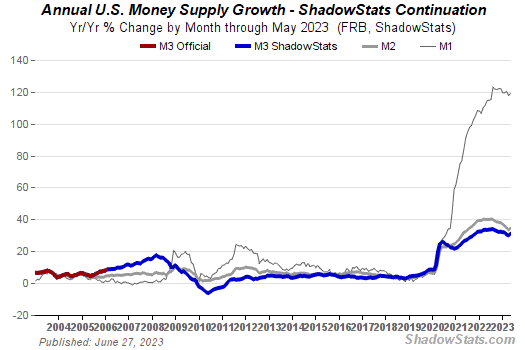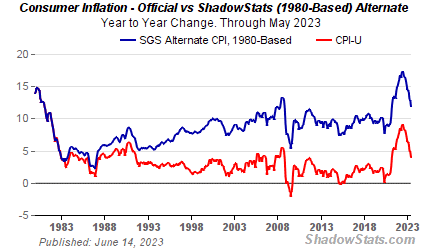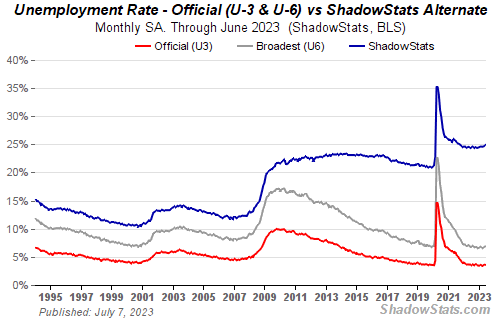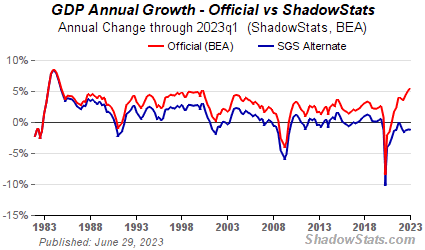Government tweaks the formulas for calculating their metrics so it's difficult to compare current indices against historical data. Fortunately John Williams (not the music composer) compiles the stats using the original/traditional formulas:
http://www.shadowstats.com/alternate_data
Money Supply

Inflation

Unemployment

GDP

http://www.shadowstats.com/alternate_data
Money Supply
The Fed ceased publishing M-3, its broadest money supply measure, in March 2006. The SGS M-3 Continuation estimates current M-3 based on ongoing Fed reporting of M-3’s largest components (M-2, institutional money funds and partial large time deposits) and proprietary modeling of the balance.

Inflation
The CPI chart on the home page reflects our estimate of inflation for today as if it were calculated the same way it was in 1990. The CPI on the Alternate Data Series tab here reflects the CPI as if it were calculated using the methodologies in place in 1980. In general terms, methodological shifts in government reporting have depressed reported inflation, moving the concept of the CPI away from being a measure of the cost of living needed to maintain a constant standard of living.

Unemployment
The seasonally-adjusted SGS Alternate Unemployment Rate reflects current unemployment reporting methodology adjusted for SGS-estimated long-term discouraged workers, who were defined out of official existence in 1994. That estimate is added to the BLS estimate of U-6 unemployment, which includes short-term discouraged workers.
The U-3 unemployment rate is the monthly headline number. The U-6 unemployment rate is the Bureau of Labor Statistics’ (BLS) broadest unemployment measure, including short-term discouraged and other marginally-attached workers as well as those forced to work part-time because they cannot find full-time employment.

GDP
The SGS-Alternate GDP reflects the inflation-adjusted, or real, year-to-year GDP change, adjusted for distortions in government inflation usage and methodological changes that have resulted in a built-in upside bias to official reporting.


